Until you’ve had shotgun shells explained to you, that shotgun you just purchased is worthless to you. At best, you’ll buy the wrong shotgun shells for your target animal. At worst, you could kill or injure yourself using the wrong ammo in your shotgun.
Hey, I know what you’re thinking. You don’t have time to read a long article like this one. You want to go hunting! You plan to ask a gun store employee what ammo to use and buy what they suggest.
If that’s your plan, I offer you one tip before you leave this page. Ask the employee if they have any four-ten gauge shotguns. If the employee says yes, you need to find another ”expert.” The .410 shotgun is named for its bore diameter (.410”) and would more correctly be called a 67.5 gauge shotgun. It’s not picking, but we are talking about firearms here, and your safety demands accurate knowledge.
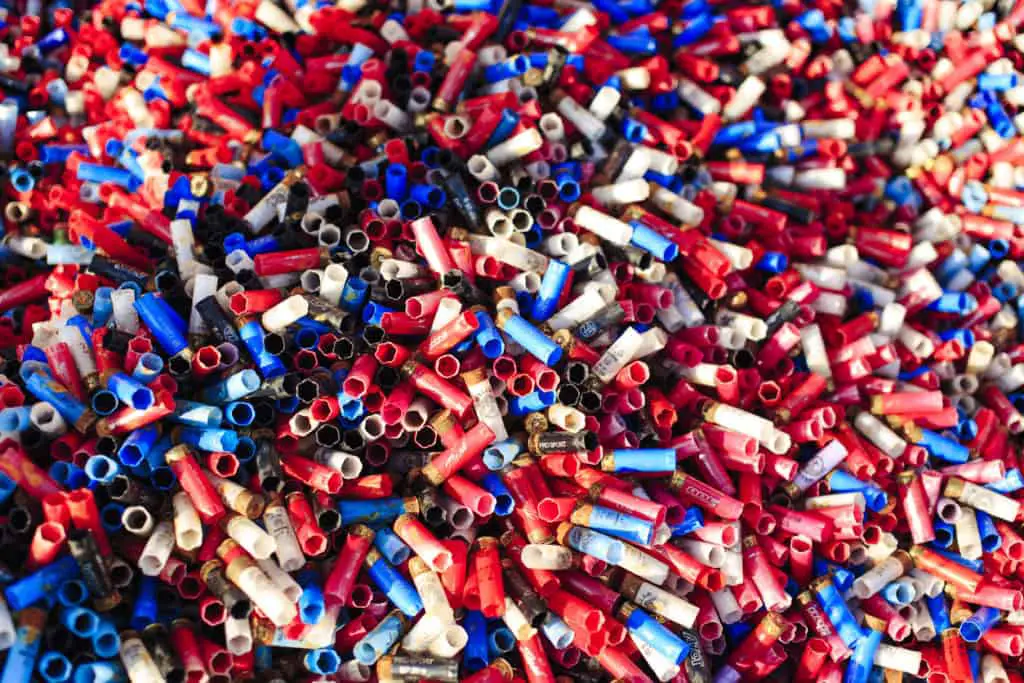
Shotgun shells explained: The basics.
The two most common types of shotgun shells are shotshells and slugs. Shotshells contain multiple pellets (ranging in size from .16 to .23″ in diameter). Slugs have a single solid projectile (weighting between 7⁄8 oz, 1 oz, and 1 1⁄8 oz).
Hunters don’t use non-lethal shells or ones that shoot fire, flechettes, or tiny plastic dolls. So, we will discuss the three primary shotgun rounds; shot, buckshot, and slug. I’ll ignore all the specialty rounds to simplify and shorten this article.
And, we will do it like you were just found in a 2,000-year-old block of ice, defrosted, and thought, “I always loved coyote hunting with a stick. Wonder what it would be like with a fire stick?”
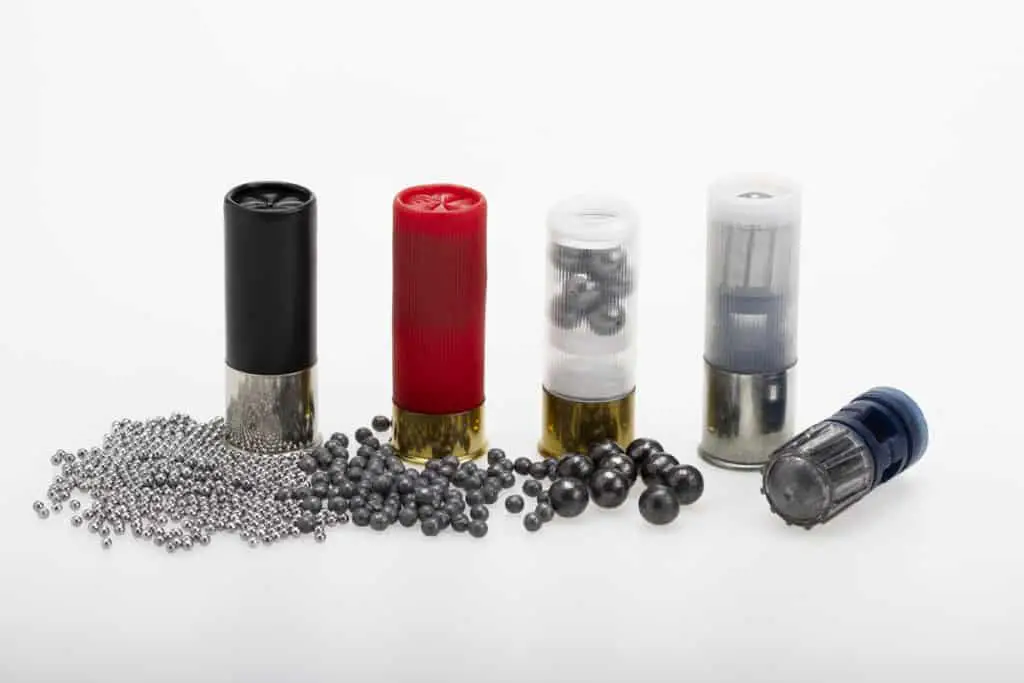
A standard shotgun shell comes with three types of projectiles; birdshot, buckshot, and slugs. Birdshot, so named for its use on birds, can contain hundreds of tiny pellets. As the name applies, buckshot is used on larger animals and has between 6-21 pellets, depending on shell size. Slugs are single, solid projectiles, usually made of lead, used only on larger game animals.
To select the correct shotgun shell for your shotgun, you must first know what size shell it is chambered for and its gauge. Most hunting shotguns are either 20 or 12-gauge. These shotguns are chambered for 2½-inch, 2¾-inch, 3-inch, or 3½-inch shells.
Conveniently for you, all this information is often stamped on your shotgun’s barrel. If you can’t find it there, consult the owner’s manual that came with your shotgun.
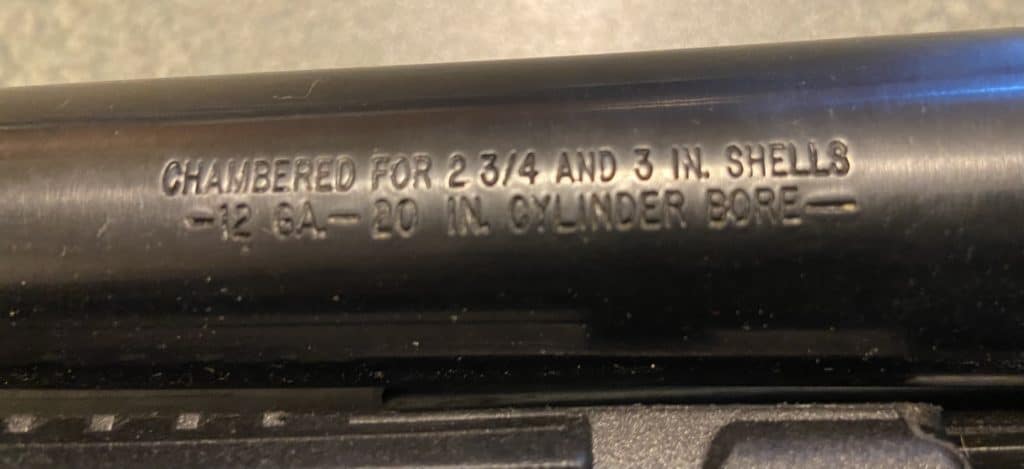
Two dangers of using the wrong shotgun shells.
Once you have ascertained the gauge and shell sizes your shotgun takes, you should be able to avoid the two most common mistakes.
- Mistakenly using a shotshell that exceeds the approved shell length stamped on the barrel of your shotgun. This error is easy because shotgun shells are measured on their ”fired form.” Therefore, a 3-inch shell will be 3 inches long after firing it. Before firing, however, it will fit into a shotgun proofed for 2 3/4 inch shells. Using a longer shell than allowed can result in damage to your weapon and injury to yourself.
- Accidentally loading a 20-gauge shell into a 12-gauge gun. Here the problem is the 20 gauge shell will slip past the chamber and lodge in the barrel. If you don’t realize what has happened and load and fire a 12 gauge shell without clearing the obstruction, you could suffer serious bodily harm.
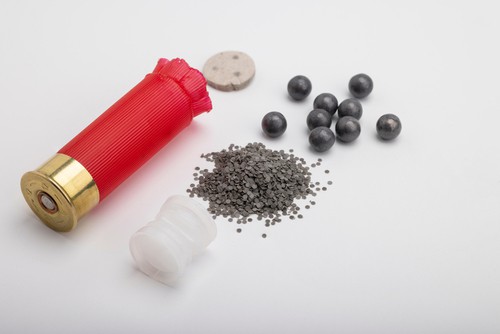
How a shotgun shell works.
A shotgun shell consists of a plastic case with a metal base. Inside the base are the primer and powder charge. Next is the wad, a plastic or fiber divider that separates the shot from the powder charge and acts as a cushion to prevent damage to the shot. The last part of a shotshell is the shot cup. The shot cup holds the shot together as it travels down the barrel and peels away from it as it exits the muzzle, permitting the projectiles to continue their flight undisturbed.
Pulling the trigger sends the firing pin forward, striking the primer, and the primer ignites the shell’s powder. The powder burns, releasing expanding gases that rapidly build up pressure and drive the wad and the shot forward and out of the barrel’s muzzle.
The types of shotgun shells.
Shotgun shells come in two forms; shot shells (with multiple projectiles) or slugs (one solid projectile). Which type you need will depend on your targeted prey.
Shot shells with multiple pellets can only accurately be fired using a smoothbore barrel. In a smoothbore barrel, the shot exits the muzzle in a tight, unified group that spreads out slowly as it travels toward the target. If shot shells are fired from a rifled barrel, the rifling spins the pellets into a spiral, rapidly dissipating the shot’s energy and spreading it into a cloud of lone pellets. Shooting shot shells from a rifled shotgun will also damage the rifling of the barrel.
Rifled slugs, projectiles made with rifling built into them, are made to be fired from smoothbore barrels.
Rifled shotgun barrels (often called slug guns) impart a spin on the projectile as it passes down the tube. This spin makes the shot more accurate. You should only use sabot slugs in a slug gun. A sabot slug is affixed to either a bore-sleeve or a wad (the sabot). The sabot holds onto the barrel rifling and spins the projectile inside it to increase accuracy. Shooting a sabot shell in a smoothbore barrel isn’t dangerous, but it wrecks downrange accuracy.
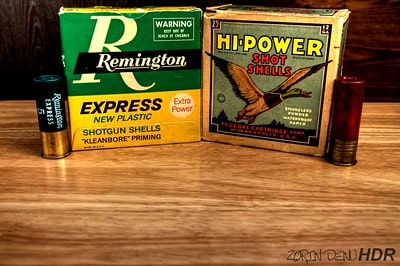
Understand what shot and muzzle velocity mean in a shotgun shell.
Choosing the right shotgun shell often comes down to two factors, its shot weight and the muzzle velocity of that shot.
Shot. The ”shot” in a shotgun shell is measured in its weight in ounces. In 12-gauge shells, it’s normally one ounce for small game and up to 1 3/8 ounces for waterfowl.
Muzzle velocity. When grandpa was toting a shotgun in the field, he used the amount of powder to determine the effectiveness of a shell. Today, you can’t find the number of drams of powder on a box. That information has been replaced by a much more useful number, the shell’s muzzle velocity.
Muzzle velocity is measured in feet per second the moment the projectile leaves the barrel. The muzzle velocity on a box of shotgun shells isn’t a guarantee and it isn’t consistent. Think of that number as an advertising tool. At best, it’s an average between a high and low speeds the manufacturer recorded during their testing. Fortunately, there’s enough government oversight to make a manufacturer’s claimed muzzle velocity a reliable number for you to use.
For a new shotgun hunter, a muzzle velocity of 1,200 to 1,300 is suitable for small game like rabbits and squirrels. And a 1,350 to 1,700 feet-per-second muzzle velocity work well for waterfowl.
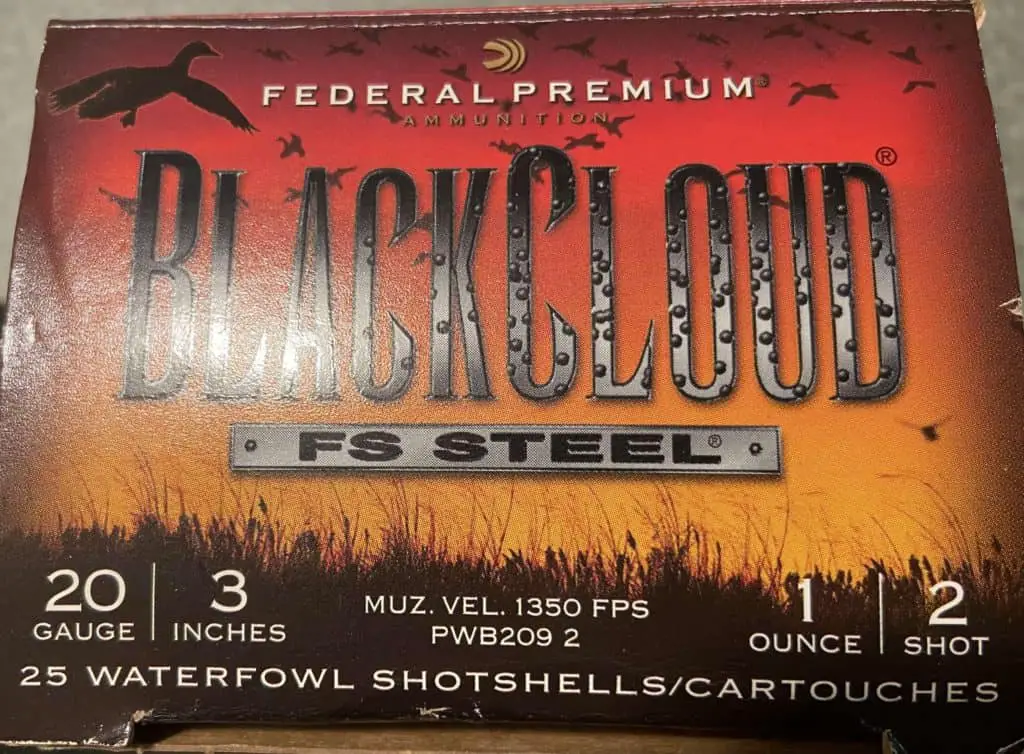
Shotgun shells explained: Selecting the correct shell.
Coming straight out of the Marines, I only knew two types of shotgun rounds; buck and slug. When I started hunting, like many new shotgun owners, I relied on the picture of the animal on the box to know which round I needed to purchase. It still kind of works, especially if you are hunting zombies.
It took me a while to learn the three types of projectiles. And longer to figure out which to use on the various critters I was hunting.
Let’s look at those three types of shotgun shells I mentioned earlier; birdshot, buckshot, and slugs.
Shotgun shells explained: What is birdshot used for?
Birdshot is, no surprise here, made for hunting birds. Like all shotgun rounds, the smaller the number (No.) of the shot, the larger the diameter of the pellets. Birdshot today ranges from Number 12 (with pellets measuring .05 inches in diameter) to Number 1 (.16), B (.17), BB (.18), BBB (.19) and T (.20), TT (.21), F (.22), and FF (.23).
The larger your game bird, the smaller number birdshot you’ll want to use.
Best birdshot size for quail, pigeon, grouse, turkey, and pheasants.
Quail: To effectively take a quail at 20-40 yards without damaging the meat, the best birdshot round is the No. 6.
Pigeon: Most bird hunters prefer the No. 5 when hunting pigeons.
Grouse: On the larger end the No. 6, and on the smaller end, the No. 8 birdshot rounds work best.
Turkey: Once upon a time, turkey hunters overwhelmingly preferred the copper-plated lead pellets found in the No. 5 shot. These rounds produce a pattern roughly a foot across at ranges between 40-50 yards.
However, things have changed with the entry of tungsten turkey loads into the market. Tungsten pellets are denser and heavier, resulting in deeper penetrations and far more energy further downrange. Tungsten turkey loads let you use smaller shells, vastly reducing the recoil and making the 20 gauge a practical shotgun for turkey hunters. Tungsten is expensive (5-6 times as much per round), but it allows smaller framed adults and children to take well-aimed shots without coming home with bruised shoulders.
Pheasant: Pheasant hunters primarily use two loads, No. 6 and No, 5. Which one depends on the time of year and the amount and density of the pheasant feathers. In the Fall, No. 6. From late Fall to early Spring, No. 5 will be able to penetrate the denser feather covering. No. 5, however, can and often is used all season.
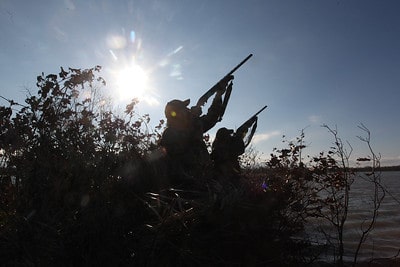
Recommended birdshot sizes for ducks and geese.
Please note: Waterfowl must be taken with nontoxic steel shot.
Small ducks: Given the speed and maneuverability of small ducks, a broader pattern and a larger number of projectiles are helpful. Using No. 5 or No. 6 at ranges up to 25 yards is your best choice.
Medium-sized ducks: The best birdshot size for medium-sized ducks is No. 3 at ranges up to 50 yards.
Large ducks and small geese: Most duck hunters prefer to use No. 2 birdshot within 50 yards range.
Geese: If you are hunting waterfowl the size of a Canada goose at up to 50 yards range, use No. 1 birdshot.
What are birdshot sizes B, BB, BBB, T, TT, F, and FF used for?
Birdshot at these sizes sit right between what we call birdshot and buckshot. A waterfowl hunter can use them to extend their range, but also take a coyote that makes a sudden appearance 20 yards away.
However, using even larger caliber birdshot for hunting coyotes isn’t recommended. At 20 yards, a well-placed shot will take a coyote. However, past that range, the lower velocity won’t produce the depth of penetration required to kill even a small coyote humanely.
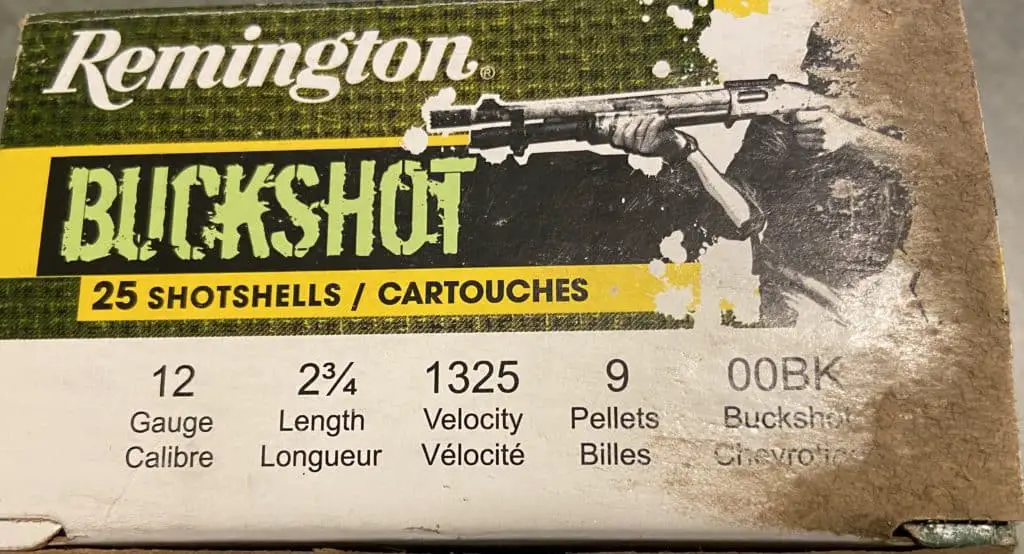
Shotgun shells explained: What is buckshot used for?
Buckshot is used for medium to big game and is primarily designed for hunting and self-defense.
There are seven common buckshot sizes used by most hunters. There diameters measure: #4 Buck (.24), #3 Buck (.25), #2 Buck (.27), #1 Buck (.30), #0 (single-ought) Buck, (.32), #00 (double-ought) Buck (.33), and #000 (triple-ought) Buck (.36).
Buckshot was once a favored round for whitetail deer. It has since been replaced, though, and is even illegal in some states (like New York), where shotguns must fire a single projectile.
That doesn’t mean that buckshot is in any less use or favor today, though. Buckshot has found new life as a predator round, especially for coyotes. While an affordable round like the 12-gauge Remington 00 in the 2 3/4 size will do the job, there are a variety of specialized rounds on the market today.
You can find out what shotgun shells the pros use in this article about coyote hunting with a shotgun for beginners. I prefer the 12 Ga. Hornady Heavy Magnum Coyote for night hunting in the woods of New York. The Hornady Heavy Magnum Coyote shot is nickel-plated #4 buck (BB) with a muzzle velocity of 1,300 feet-per-second. At $2 a round, it’s a bit pricey, but it produces a dead right there coyote or fox.
Speaking of fox, it’s probably time to admit that fur prices are far too low to earn a living from. Since a red fox on my property will kill my chickens or ducks, I’m happy to spend two dollars to ruin the flesh of these miserable and highly destructive critters. Related: Hunting predators with a shotgun.
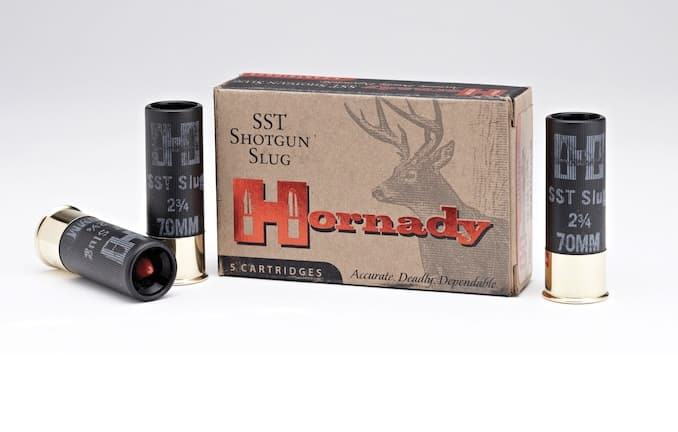
Shotgun shells explained: What are shotgun slugs used for?
Shotgun shells are excellent rounds for use on hogs, bears, and deer. Since slugs fired from slug barrels travel like regular bullets. There are two types of hunting shotgun slugs: Rifled slugs (for use in smoothbore barrels) and Sabot slugs (for use in rifled barrels).
Even after traveling 100 yards and losing nearly 60% of its velocity, a one ounce slug will still harvest a large whitetail deer.
Selecting the correct slug is often as easy as picking a box of shells at the store and finding a picture of a buck on it. Hornady’s SST and the Winchester XX Rifled Slug Hollow Point often remain in stock during shortages. Please note: I have no affiliation with any ammo manufacturers or distributors.
In many places, deer hunters are required to use shotguns instead of rifles while deer hunting. This may lead you to believe a slug travels a much shorter distance than a rifle bullet. A one-ounce slug can still travel a mile away, resulting in death or severe harm. Using a shotgun when deer hunting still means you must be sure of your target and everything between you and it—and beyond it.
What’s the best shotgun ammo for self defense?
As a young Marine, I was issued a Remington 870P (with a folding metal stock). I carried that weapon for three years while protecting American embassies in Europe and Africa. The only types of shotgun shells we were issued were double-ought buck and one-ounce slugs.
Since then, I have heard hundreds of discussions about which shotgun ammo was ”perfect” for self defense. A good definition of ”self defense” will help you decide this issue for yourself.
The purpose of self-defense is to end the threat. The threat, however, can come in two forms; animal and human. The danger can also materialize in one of two locations; one with a safe backstop and one without.
Rural vs. urban self shotgun rounds.
If you live in a rural area with a safe backstop, you can stagger your load (double-aught, slug, double-aught, slug) and safely defend yourself against even discovering an angry bear in your kitchen.
In an urban environment, over penetration and people in the next room are a serious concern. Here the “experts” suggest you either use the sound of a racking shotgun to scare off the threat, load only birdshot to prevent your shots from leaving the house, or use No. 4 buckshot.
Let’s be honest, options one and two might work—if you and the threat are lucky. The upside (and it is a huge one) is you may not have to take a life. The downside is you may not stop the threat. Here another problem pops up, your imagination. You imagine a threat immediately retreating or surrendering after being hit with a load of 12 Ga. birdshot.
But it never occurs to you that your hit failed to penetrate the threat’s jacket or clothing, did not hit a vital area, or that the threat can still return gunfire.
No. 4 or double-ought buck for home defense?
Let’s be serious here; a No. 4 load of buckshot will end a threat and produce less over-penetration than double-ought. Remember, we are in the city, and the threat is feet away. A round like Winchester Super X Deer and Predator No. 4 buck is cataclysmic at point blank range. In an actual shooting event, the threat has as many as 27, .24” pellets blazing at it at speeds close to 1,300 feet-per-second.
Having said that, you should still consider using double-aught. Why? Well, we will answer that question in the next section.
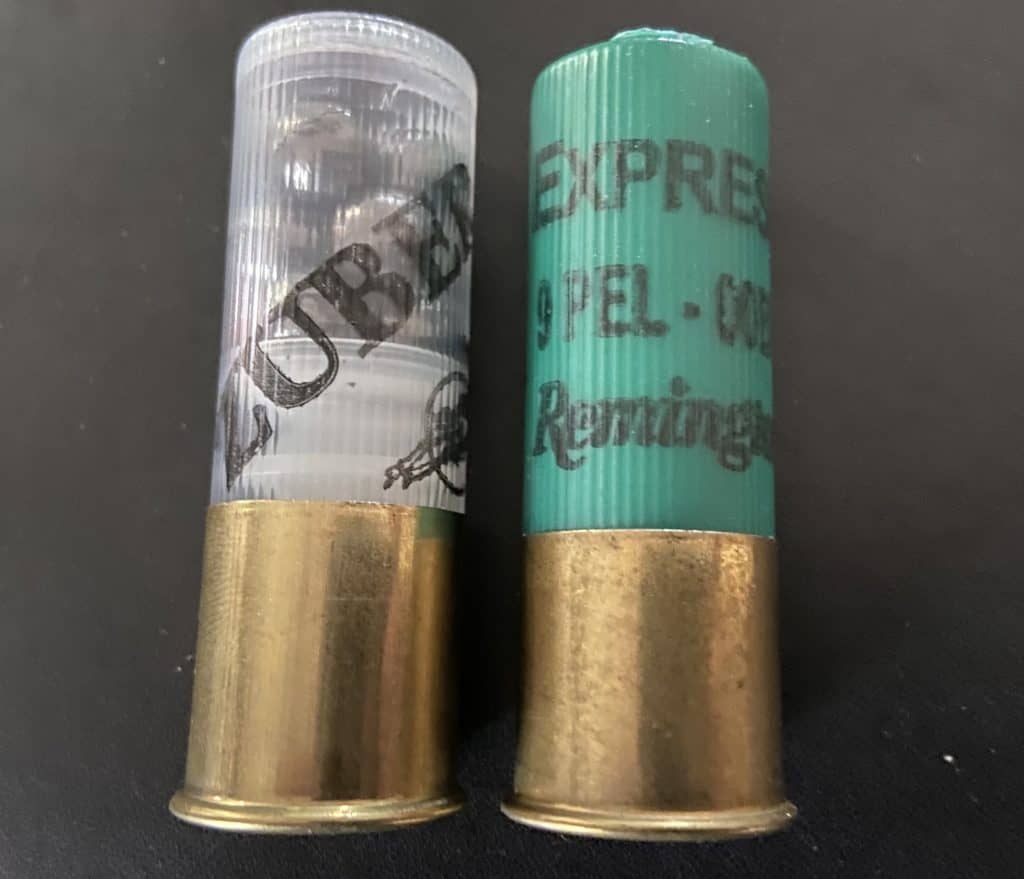
Why double-aught buck is still the King of the Castle’s best shotgun round.
The bitter truth is that your best self-defense weapon is your shooting skill. You will need to fire many rounds while you are there. And the only way to hone your skill is to spend a lot of time on the range.
Here’s where the No. 4 buck becomes a problem. It is primarily a specialty round. Folks like me use it for coyote hunting—and manufacturers are constantly modifying it, using different metals as the projectile, or plating it with other metals like copper.
This makes No. 4 buckshot a lot more expensive than double-aught buckshot ($2 vs. $1.10 today). At the range, money is always what limits your training time.
While you are at the range, you should be shooting at a distance similar to what you expect back home. Hey, this part is easy. What’s the furthest distance from any part of your home to your front or back door? Once you have that measurement, use it to set up your targets.
Why measure from your doors? Because you are training for self-defense. Your doors should be treated as electrified prison fences. Your ability to defend yourself after a self-defense shooting will be significantly facilitated by remembering to never open, shoot out of, or go through that door with your shotgun.
Some states have ”stand your ground” laws, but not all of them. And in every case, where you do not pursue a threat outdoors and only defend yourself from an imminent and approaching threat inside your residence, you stand a better chance in court.
Run out that door, and any shot you take may injure innocent bystanders.
Your shotgun shooting skills dictate what round you should use.
If you never practice with your shotgun, it’s more of a hazard than a helpful tool. In an emergency, you may try to use it and fail rather than attempt to escape, summon help, or find another way to defend yourself.
With some time on the range, you can ignore what all of us ”experts” say and load the round you know you can fire effectively enough to end the threat and safe enough to reduce the odds of over-penetration.

